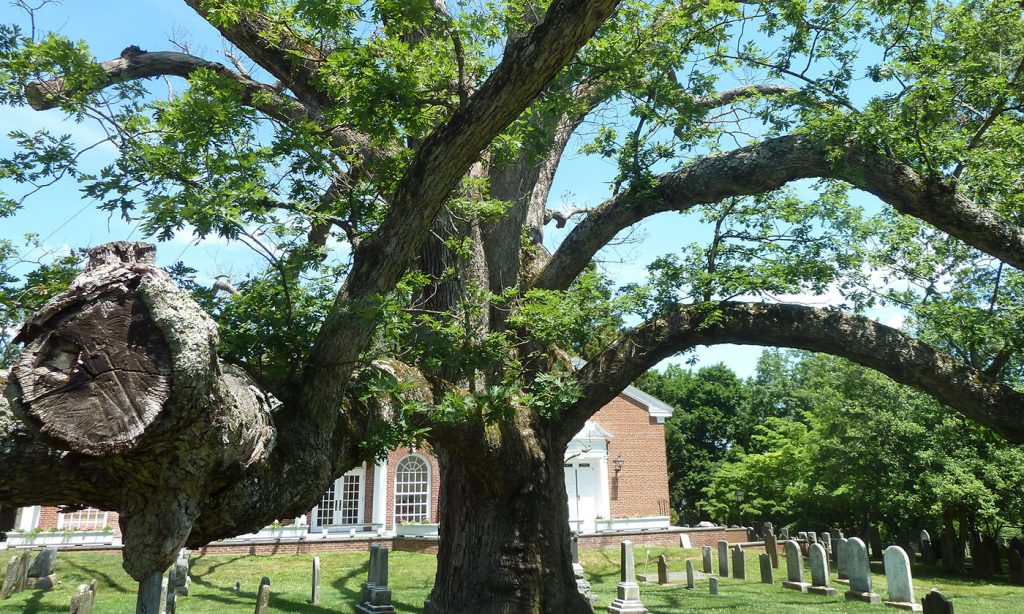Amid this year’s titanic political and social upheavals, the town of Basking Ridge, New Jersey, found time for quiet mourning. One of the East Coast’s most famous trees, a centuries-old great white oak that spread its serpentine limbs over a cemetery beside the Basking Ridge Presbyterian Church, was dying. In October, the tree was pronounced dead; a month later, distraught residents held a memorial service.
To mourn a tree as if it were human is understandable, even natural. There are ways, after all, that trees really are like us. We appear to share a basic body plan, with thick structures stabilising us on the ground and thinner limbs reaching into space. Inspired by recent research into plant communication and nutrient sharing through underground root networks, the ecologist Peter Wohlleben in The Hidden Life of Trees (2016) even writes about trees as familial and socially networked. Tree-like characters also appear in mythology, from Daphne (whose arboreal transformation helped her escape the amorous Apollo) to the forest-dwelling Ents in The Lord of the Rings.

